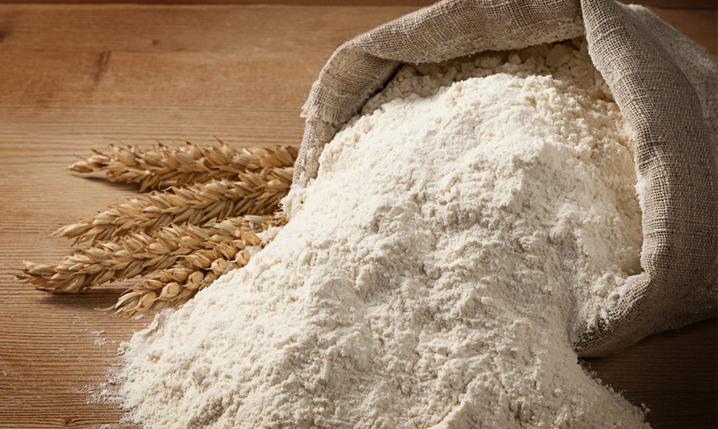Chickpea flour is a staple in gluten-free baking that is growing in popularity. This flour, made of ground-up garbanzo beans or chickpeas, is rich in protein while accommodating dietary restrictions.
Chickpea flour is not a new invention by the health food industry. In the Indian subcontinent, it has been a staple for centuries, where it is used to make snacks, flatbreads, and more. In the Mediterranean, cooks use a variety of chickpea flour to make fritters and pancakes that are popular street foods.
Many cooks and bakers are turning to chickpea flour for its versatility and excellent nutritional content. However, it can still be hard to find outside of specialty stores. If you can’t locate chickpea flour, try these alternatives.
1. Quinoa Flour
If you’re looking for a gluten-free chickpea flour substitute that is also packed with nutrients, quinoa flour is your best bet.
Made from quinoa, a nutritious seed popular in the Andes, quinoa flour is high in calcium, fiber, and protein. In addition, it has a similar texture to chickpea flour, so it functions well as a replacement. For example, you can use quinoa flour to replace chickpea flour as a binding agent in fritters.
However, quinoa flour on its own does not work well in baked goods, so you may need to mix it with another gluten-free flour. Its taste is also more pungent than chickpea flour, which can be off-putting to some people.
2. Oat Flour
Like chickpea flour, oat flour is a gluten-free flour. It is rich in fiber and low in carbohydrates, making it keto-friendly and celiac-friendly. Oat flour is more accessible than chickpea flour because you can make it at home by grinding up oats in a food processor.
Oat flour is a suitable binder, like chickpea flour, but it is very dense in baking. You need to mix it with another gluten-free flour to replace chickpea flour in a baking recipe.
Some oat flour is not gluten-free because of the facilities in which it is processed, so read the labels carefully.
3. Millet Flour
Millet flour is popular in East Asia and Africa. Recently, it gained global popularity as a superfood thanks to its high calcium and fiber content (although it has slightly less protein than chickpea flour).
Millet flour is slightly sweeter than other gluten-free flours, so it works best to replace chickpea flour in dessert recipes.
Note: Millet flour does not bind as well as chickpea flour, so you will need to mix it with another flour and adjust water levels.
If you have thyroid issues, don’t eat millet flour because it affects iodine levels.
4. Wheat Flour

Sometimes, the simplest substitutes work the best. Wheat flour is a global staple for a reason—it is versatile and rises well, giving baked goods a light, airy texture. You won’t need to conduct complex calculations to determine the correct baking ratios.
However, wheat flour is not as nutritious as chickpea flour and contains gluten (unless you specifically buy the gluten-free kind). So if you are using chickpea flour because you are trying to be health-conscious, this is not the best substitute.
5. Cassava Flour
Cassava flour is a South American staple made from ground cassava root. It is gluten-free and packed with protein, like chickpea flour, making it a popular ingredient for nutrition-conscious bakers. In addition, cassava flour has a soft texture that produces light, flavorful dishes when you use it in baking.
If you hope to use cassava flour instead of chickpea flour in a bread recipe, mix it with another gluten-free flour to get the right texture. Cassava flour is so soft that it has trouble rising, and you don’t want to get stuck with a dense bread.
6. Almond Flour
If you are struggling with finding chickpea flour in the grocery store, then almond flour is one of your best bets as a replacement.
Almond flour is one of the most popular gluten-free flours out there. You can also make it at home by grinding up almonds in a food processor.
Almond flour works best as a binding agent when making cakes or patties. It is also an excellent ingredient in baked goods. However, it has a nuttier, sweeter flavor than chickpea flour, which might affect your dish’s final outcome.
7. Buckwheat Flour
If you’re trying to make savory pastries, flatbreads, or noodles, buckwheat flour is a good substitute. Buckwheat flour is a popular East Asian staple used in traditional foods such as soba noodles.
Like chickpea flour, it is healthier than wheat flour. It has fewer calories and more nutrients. Buckwheat flour is also gluten-free because buckwheat is not wheat but a seed.
However, buckwheat flour is more bitter than chickpea flour, so you may need to adjust quantities if you don’t want it overpowering your dish.
